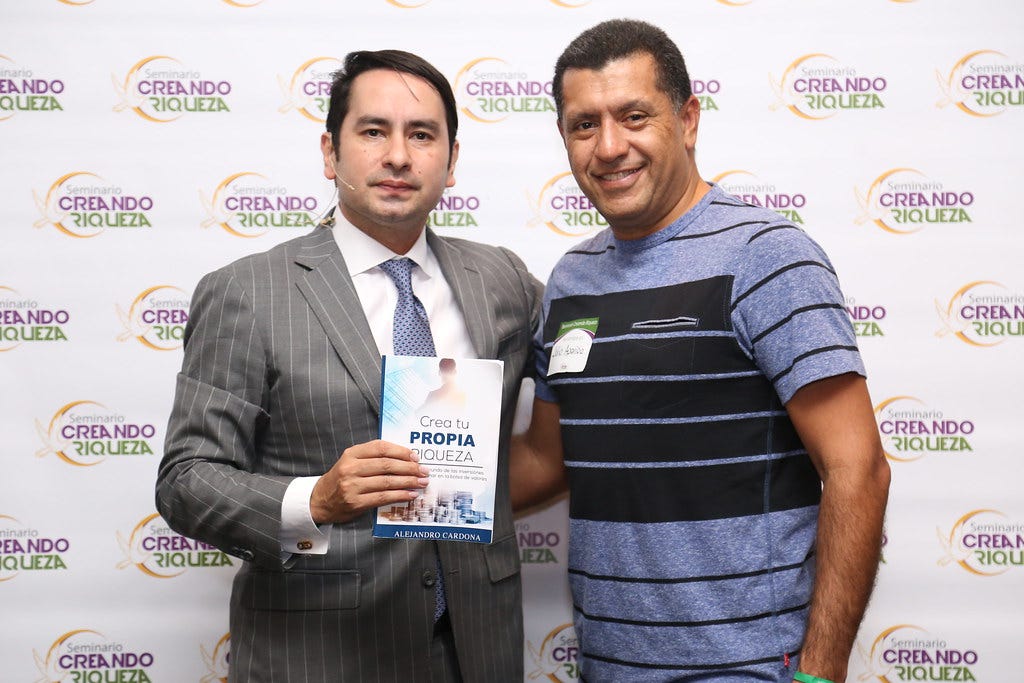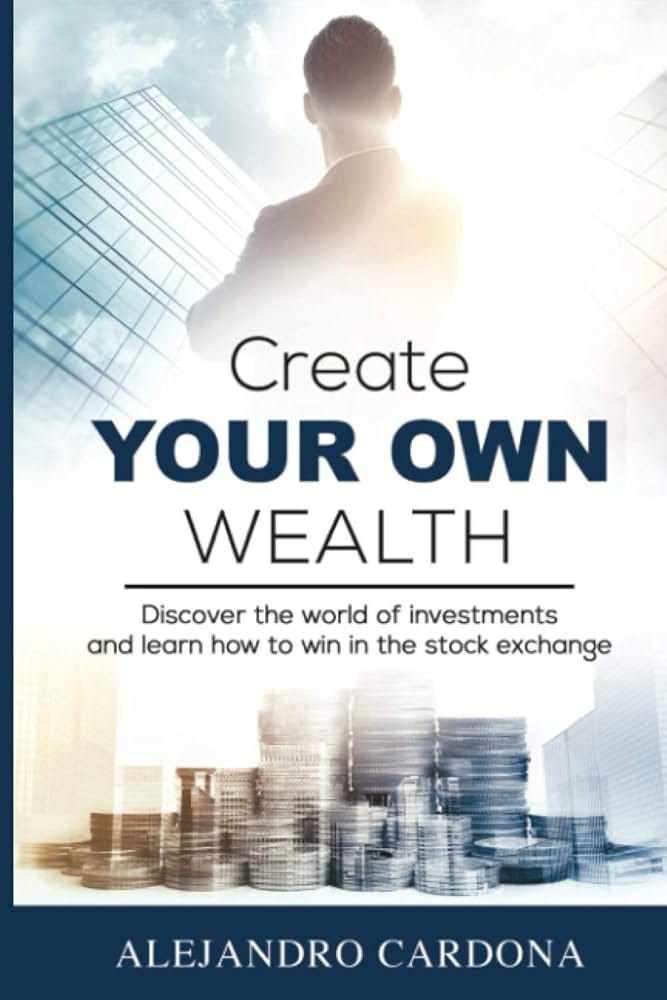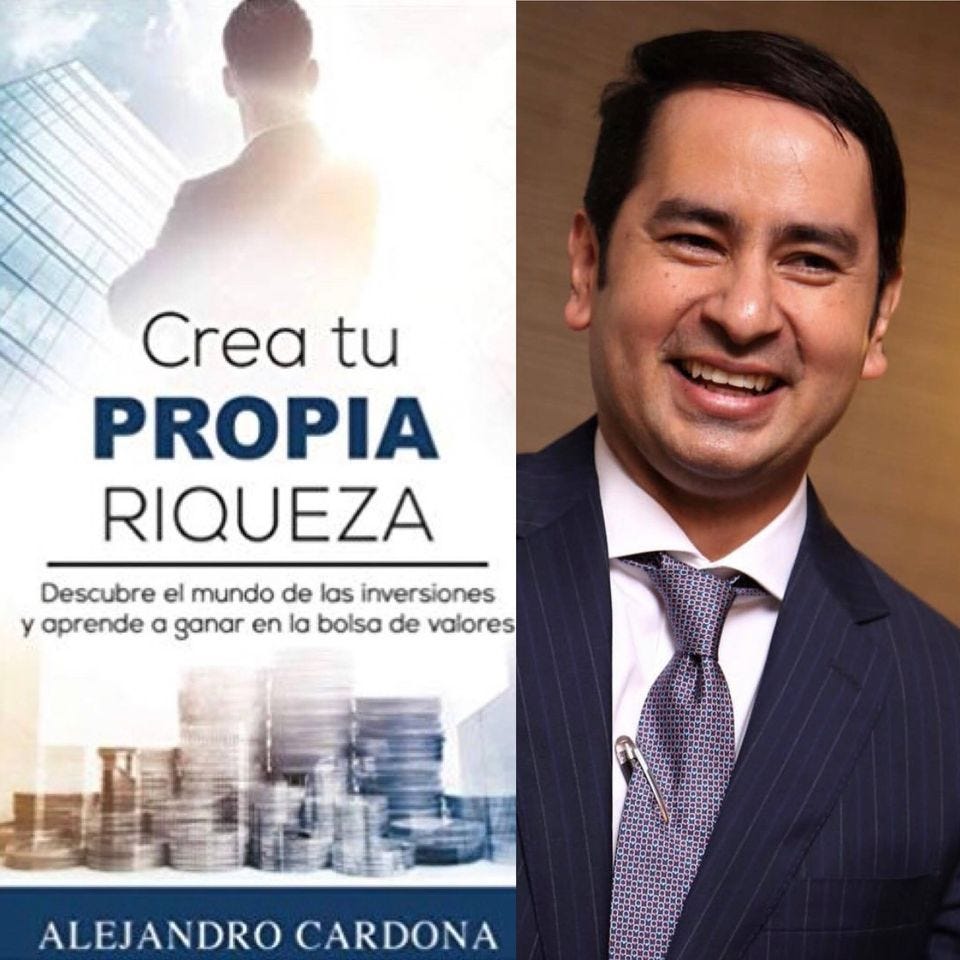From Debt to Triumph: Alejandro Cardona's Journey Overcoming $1 Million in Debt and Mastering Wealth
In this insightful interview, we hear from Alejandro, a seasoned expert in wealth creation and investing, as he shares his knowledge on the mental, emotional, and spiritual foundations necessary for long-term financial success. Throughout the conversation, Alejandro emphasizes that true wealth is not just about accumulating money, but about cultivating a mindset that aligns with prosperity and abundance. Drawing on his own experiences, Alejandro delves into how mastering one's emotions and thoughts plays a pivotal role in achieving success, particularly in challenging fields like the stock market and real estate. The interview also touches on the power of learning from successful historical figures and how Hispanics, in particular, can break traditional barriers to wealth and contribute to their communities in meaningful ways.
With a focus on mental training, emotional discipline, technical knowledge, and spiritual alignment, Alejandro presents a holistic approach to wealth creation. His belief that financial freedom is accessible to anyone willing to change their mindset, manage their emotions, and stay committed to their growth is the cornerstone of his message. This conversation not only provides valuable insights into the world of investing but also offers inspiration to those seeking to transform their financial futures.
Alejandro’s journey to financial success and expertise in wealth creation began with humble beginnings, marked by a deep drive for self-improvement and a passion for learning. Raised in a community where resources were limited, Alejandro quickly realized that in order to break free from financial constraints and achieve his dreams, he needed to develop a mindset centered around abundance and success.
Starting out, Alejandro faced significant challenges and setbacks, which only fueled his determination. He was initially exposed to the financial world through the concept of investing, but it was his personal struggles and failures that taught him the true importance of mental resilience and emotional control in business and investing. Alejandro often speaks about how, in his early years, he lacked the guidance and knowledge to navigate the complexities of wealth building. However, his curiosity and willingness to learn led him to study the lives and strategies of successful individuals from history, including figures like Rockefeller, Carnegie, and Disney, whose experiences shaped Alejandro's understanding of what it takes to succeed.
Through perseverance, Alejandro began to understand that wealth creation is not just about the strategies or tools—such as real estate or investing in the stock market—but about how one’s mind, emotions, and spirituality align with success. His early experiences taught him that understanding one’s own mental and emotional states was crucial to making sound decisions in business. Alejandro also began to observe that many wealthy individuals, particularly those in Latin American communities, faced unique cultural and societal barriers that often kept them from achieving their full potential. This realization became a driving force behind Alejandro’s mission to empower others in his community by sharing the knowledge he had acquired through both study and practical experience.
As Alejandro’s career progressed, he became more involved in mentoring others, sharing the wisdom he had gained from both his failures and successes. He developed a comprehensive approach to wealth-building that went beyond just financial acumen, integrating mental and emotional training, spiritual alignment, and technical knowledge. Today, Alejandro is not only a wealth-building expert but also a passionate advocate for helping others, particularly Hispanics, break through financial barriers and achieve success. His story is one of transformation, from someone starting with limited resources to becoming a leading voice in financial education and investment strategies.
During one pivotal period of Alejandro's career, he found himself facing a severe financial crisis: he was in debt to the tune of $1,000,000. This was a turning point that would shape much of his future approach to wealth creation and financial strategy. The journey to overcoming this enormous debt was fraught with challenges, but it was also a defining moment that taught Alejandro crucial lessons about resilience, mindset, and the importance of financial literacy.
At the time, Alejandro had made significant investments in various ventures, including real estate and business opportunities. However, due to unforeseen circumstances—market fluctuations, poor decisions, and perhaps an overestimation of his capacity to manage multiple projects—he found himself in a situation where his liabilities greatly outweighed his assets. The debt, which had accumulated over time, began to feel like a crushing weight on his shoulders. Alejandro recalls feeling as though he had hit rock bottom, overwhelmed by the enormity of the situation. Despite his successful past experiences in business and investments, this financial crisis shook him to his core.
However, Alejandro did not allow himself to be defined by his debt. Rather than succumbing to fear or panic, he chose to confront the situation head-on, believing that it was not the amount of money he owed that mattered, but how he responded to the crisis. A key element of his approach was shifting his mindset. Alejandro recognized that the root cause of his financial troubles was not just external factors like market conditions, but also internal factors, such as his mental and emotional approach to money and risk. He realized that in order to overcome this challenge, he needed to work on his mindset just as much as he worked on resolving his financial issues.
One of the first steps he took was to regain control over his emotions. Alejandro emphasized that many people, when faced with financial distress, let their emotions—fear, anger, or frustration—dictate their decisions. He acknowledged that, for him, this had been a mistake in the past. Instead, he decided to approach his debt with clarity and a calm mindset. This allowed him to evaluate his situation objectively and develop a plan of action.
In terms of the practical steps, Alejandro knew he had to focus on reducing his liabilities. He began by restructuring his debts and negotiating with creditors, finding ways to ease the pressure. He was strategic about liquidating non-essential assets and cutting back on unnecessary expenses. Alongside this, he revisited the business opportunities that had contributed to his debt and restructured or divested from those that were not profitable.
But perhaps the most critical element of Alejandro’s strategy was his commitment to continual learning. He immersed himself in studying financial principles, investment strategies, and the psychology of wealth. He drew on the lessons learned from historical figures who had faced adversity, as well as contemporary financial experts. Alejandro used his newfound knowledge to not only manage his current debt but to build a future strategy that would ensure long-term financial stability.
Through sheer determination, emotional discipline, and strategic action, Alejandro was able to not only pay off his $1,000,000 debt but to emerge stronger and wiser. The experience was transformative, teaching him that overcoming debt is as much about mastering one’s emotions and mindset as it is about making sound financial decisions. This period of struggle became a crucial part of his journey, one that later informed his approach to financial coaching and wealth-building education.
At the beginning of any journey, especially in wealth creation, everything feels difficult and confusing. However, the key to success is understanding that if you change internally, the world around you will change too. The interviewee emphasizes that negative beliefs about wealthy people can block financial success. For instance, harboring resentment toward successful individuals like Nayo or Carlos Slim, a notable Mexican billionaire, can limit one’s potential to attain success. The point here is to admire and learn from successful figures, such as business tycoons like Rockefeller, Andrew Carnegie, and Henry Ford. These figures have achieved wealth through specific strategies, and studying their stories can provide hope and inspiration.
Alejandro further suggests that if they want to help others succeed, it’s essential not just to tell success stories but to teach actionable steps that viewers can take to become investors themselves. This isn’t just about hearing how others made it, but about understanding the tools necessary to replicate their success.
The conversation moves into the mental and emotional aspects of wealth creation. Alejandro stresses the importance of training the subconscious mind to believe in abundance and prosperity. A person’s internal world—how they perceive money, success, and themselves—has a profound impact on their ability to achieve financial success. Emotions like anger, greed, or ego can cause significant setbacks in investing, even if someone knows the best strategies. The goal is to align the conscious mind with the subconscious mind, to foster mental peace and emotional control.
The topic of structuring educational content on this journey comes up. Alejandro proposes creating a series of sessions that focus on both emotional and mental preparation, essential skills for investors. This series would also discuss market understanding, with each session diving deeper into aspects like emotional regulation, mental discipline, and practical investing strategies. The idea is to build a knowledge foundation step by step, allowing viewers to move beyond just the basics of wealth creation and truly understand what it takes to succeed.
They discuss the importance of emotional control, emphasizing that success in investing, much like sports, relies heavily on mental and emotional training. Nayo recalls how, despite facing opponents who may have better physical skills, he has won in tennis by mastering his emotions. This highlights how financial markets can be equally emotionally charged, and those who let emotions like fear or greed take over often lose, regardless of their technical knowledge.
This conversation brings up an essential point: success is not just about accumulating money but also sustaining it. Many people achieve wealth but lose it quickly because their mindset hasn’t evolved to manage larger sums of money. Alejandro reflects on this by using the example of athletes and lottery winners who often go bankrupt because they haven't trained their mental and emotional responses to wealth. It's not enough to gain wealth; one must have the right structures and mindset to keep it and grow it over time.
The interview then shifts to discussing a key concept: the alignment of mental, emotional, and spiritual growth in wealth creation. Alejandro believes that, for Hispanics, God has a purpose for prosperity. There is a connection between the work people do and their potential for greater achievements. For example, many Hispanics work in laborious jobs in the U.S., like valet parking or construction, but they are capable of much more. Alejandro shares his own experience with real estate and government contracts, showing that it’s possible to achieve great success and contribute to one's community while staying true to one’s roots. This serves to break the mold of traditional narratives, showing that Hispanics can be the ones owning businesses, hotels, or major investments, not just filling roles in other people’s companies.
Through this, the idea of maintaining sustainable wealth becomes clearer. The conversation dives into the concept that wealth isn’t just about making money but also about creating a cycle of growth. Alejandro believes that as one gains more experience and insight, wealth becomes more sustainable year after year, improving exponentially. His personal practice of setting goals for the year ahead, where each year is better than the last, is shared as a mental strategy to grow and maintain success.
Four major components to achieving lasting wealth are introduced. These include:
Mental Training: A key to success in wealth creation is understanding the conscious and subconscious mind. Mental training teaches how to manage these two aspects effectively, especially in high-stakes environments like investing.
Emotional Management: Learning how to manage emotions like fear, greed, and impatience is crucial for staying calm and making clear, rational investment decisions.
Technical Knowledge: The third component involves understanding the technical aspects of the stock market—learning the patterns, cycles, and investment strategies that can guide decision-making.
Spiritual Alignment: Surprisingly, the spiritual aspect of wealth creation is highlighted. Alejandro believes that the principles of abundance align with spiritual values. For example, understanding that the universe (or God) wants prosperity for everyone can shift one’s mindset from scarcity to abundance, facilitating wealth creation.
These four pillars—mental, emotional, technical, and spiritual—need to be aligned for long-term success in investing. When these areas are balanced, it’s possible to not only make money but also to grow it sustainably over time. This holistic approach to wealth creation, combining both practical knowledge and internal alignment, is presented as a winning formula for anyone looking to achieve financial success.
Finally, Alejandro offers his seminars as a way for others to learn these strategies. He shares the website, www.seminariocreandoriqueza.com, where people can find more information and sign up for his training. The interview closes with a reminder that wealth creation is not about working for money but about learning to create it. Alejandro emphasizes that the wealth-building process is not magic but requires a combination of hard work, education, and spiritual alignment.
Support Our Work with a Bitcoin Donation
We also offer the opportunity to support our work and help us continue building the Financial Anarchy community. If you would like to contribute, we gratefully accept donations in Bitcoin. Your support will enable us to create more educational content, engage in meaningful activism, and further our mission of challenging the status quo. To donate, please use the following Bitcoin address:
bc1qmzzj5lfhe5ghv2yh3tfgt3qcuycl3r6n4llrsk
Thank you for joining us on this journey of understanding and change. Together, we can shape a brighter financial future for all.
Thanks for reading Financial Anarchy! Subscribe for free to receive new posts and support my work.









